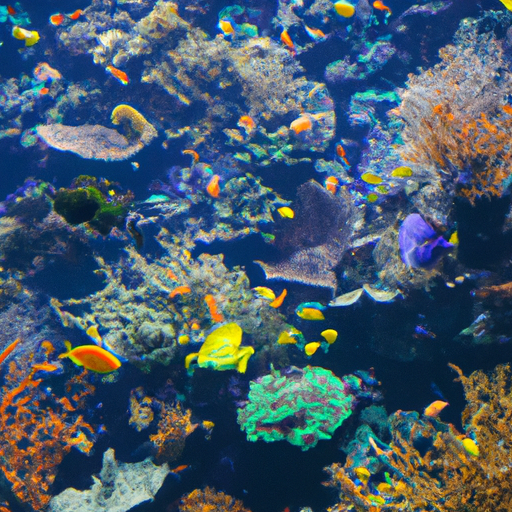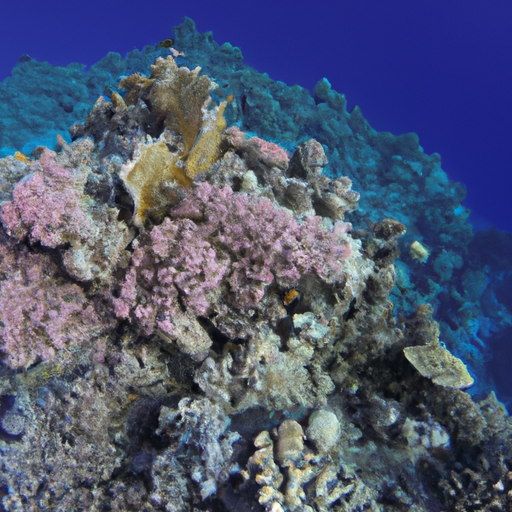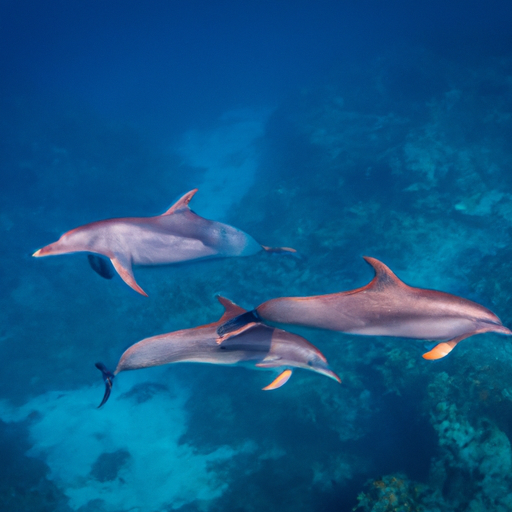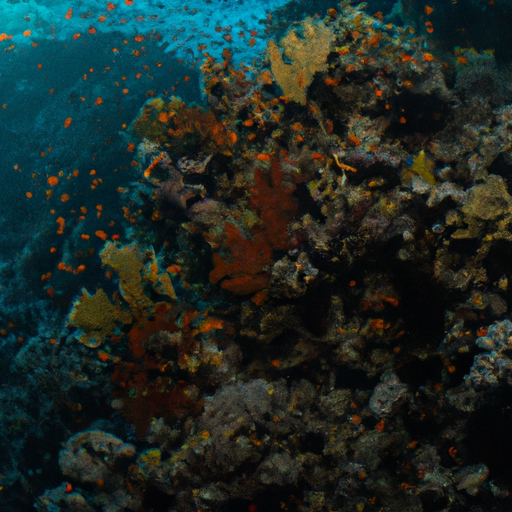
The Rich Diversity of Coral Reefs: A Kaleidoscope of Marine Life
Exploring the biodiversity of marine life is like embarking on a thrilling adventure into a mesmerizing world of color, beauty, and unimaginable species diversity. Coral reefs, often referred to as the “rainforests of the sea,” are one of the most biodiverse ecosystems on our planet. These vibrant underwater wonderlands are home to a kaleidoscope of marine life, from the intricately patterned coral polyps to the colorful array of fish, crustaceans, and other fascinating creatures.
More than just a stunning sight for divers and snorkelers, coral reefs harbor an astonishing array of species, each playing a vital role in maintaining the delicate balance of their respective ecosystems. The reef-building corals themselves provide shelter and protection for numerous marine organisms, while also contributing to the formation of the reef structure. In fact, it is estimated that corals provide a habitat for approximately 25% of all marine species, despite covering only around 1% of the ocean floor.
But the biodiversity of marine life extends far beyond the shallow waters of coral reefs. The deep sea, with its abyssal plains, hydrothermal vents, and cold seeps, is another realm teeming with lifeforms adapted to extreme conditions. Despite the pitch darkness, freezing temperatures, and high pressures, the deep sea is home to a diverse range of organisms, many of which are still undocumented or poorly understood.
One fascinating example of deep-sea biodiversity is the discovery of chemosynthetic ecosystems near hydrothermal vents. These underwater volcanic systems release mineral-rich fluids, which serve as a source of energy for unique organisms that do not rely on sunlight for survival. Tube worms, giant clams, and strange anemones are just a few of the incredible species found in these extreme environments.
Exploring the biodiversity of marine life, whether in coral reefs or the deep sea, not only reveals the stunning variety of species but also provides valuable insights into the interconnectedness and complexity of marine ecosystems. Understanding the intricate relationships between different organisms and their habitats is essential for their conservation and long-term survival.
The rich diversity of coral reefs and deep-sea ecosystems reminds us of the immense beauty and wonder that lies beneath the ocean’s surface. By safeguarding these fragile ecosystems and promoting sustainable practices, we can ensure that future generations will continue to be captivated by the awe-inspiring array of marine life that our planet has to offer.
Unveiling the Secrets of the Deep: The Fascinating World of Deep Sea Creatures
Exploring the biodiversity of marine life is an awe-inspiring adventure that takes us from vibrant coral reefs to the mysterious world of deep sea creatures. The ocean, covering more than 70% of our planet, is home to an extraordinary range of species, each playing a unique role in maintaining the delicate balance of marine ecosystems.
When it comes to biodiversity, coral reefs are among the most diverse and vibrant ecosystems on Earth. These underwater wonders support a staggering array of organisms, from thousands of species of fish to countless invertebrates and coral species. Coral reefs act as nurseries for many marine species, providing a safe haven for juveniles to grow and mature.
Exploring the hidden depths of the ocean unveils an entirely different world, filled with strange and fascinating creatures that have evolved to survive in extreme conditions. The deep sea, with its immense pressure, freezing temperatures, and complete darkness, presents unique challenges for species to thrive.
Deep sea creatures have adapted to these harsh conditions in ways that seem almost alien to us. Many species have developed bioluminescence, the ability to produce and emit light, which helps them navigate and communicate in the dark depths. Others have evolved incredible physical adaptations, such as transparent bodies or expandable jaws, to catch elusive prey.
One of the most well-known deep sea creatures is the anglerfish, a bizarre-looking creature with a long, thin stalk on its head and a bioluminescent lure. The anglerfish mesmerizes its prey with the glowing lure, attracting them closer before striking with lightning-fast speed.
But the mysteries of the deep sea are far from unraveled. Scientists estimate that we have only explored a small fraction of the ocean’s depths, leaving much of the biodiversity of deep sea creatures unknown to us. With new technologies, such as remotely operated vehicles and deep-sea submersibles, researchers are starting to unveil the secrets hidden in the abyss.
Understanding the biodiversity of marine life, from the vibrant coral reefs to the exotic creatures of the deep sea, is crucial not only for scientific research but also for conservation efforts. By studying these ecosystems and the species that inhabit them, we can develop strategies to protect and preserve our oceans for future generations.
So, let us embark on this fascinating journey to explore the biodiversity of marine life, from the shimmering coral reefs teeming with life to the enigmatic world of deep sea creatures. Together, we can unveil the secrets of the deep and ensure the survival of these remarkable species.
Adapting to Extreme Environments: The Resilience of Marine Biodiversity
Exploring the biodiversity of marine life is a fascinating endeavor that allows us to gain insights into the incredible adaptability and resilience of these organisms in extreme environments. From the vibrant and diverse ecosystems found in coral reefs to the mysterious creatures that dwell in the depths of the ocean, there is much to be discovered and learned.
Coral reefs are known as the rainforests of the sea due to their immense biodiversity and intricate ecosystems. These underwater communities are home to a myriad of species, including fish, mollusks, crustaceans, and vibrant corals. The abundant life found in coral reefs is a result of symbiotic relationships and complex food webs that have developed over millions of years. Despite the relatively harsh conditions, such as fluctuating temperatures and wave action, marine life in coral reefs has evolved various strategies to thrive.
One of the most remarkable examples of adaptation in coral reef ecosystems is the relationship between corals and the tiny photosynthetic algae called zooxanthellae. Corals provide a protected environment and nutrients for the zooxanthellae, while the algae produce oxygen and provide energy to the corals through photosynthesis. This mutualistic partnership allows corals to flourish in nutrient-poor waters and recover from disturbances such as bleaching events.
On the other end of the spectrum, the deep sea is a realm of extreme conditions, including near-freezing temperatures, complete darkness, and high levels of pressure. Despite these challenges, deep-sea creatures have evolved unique and fascinating adaptations. Some species have developed bioluminescent organs to produce light, allowing them to navigate, communicate, and attract prey in the darkness.
One such example is the anglerfish, a deep-sea predator that uses a bioluminescent lure, dangling in front of its mouth, to attract unsuspecting prey. Other deep-sea organisms, such as the giant tube worms, have symbiotic relationships with chemosynthetic bacteria that allow them to survive in the absence of sunlight by obtaining energy from the oxidation of chemicals released from hydrothermal vents.
Exploring the biodiversity of marine life, from coral reefs to deep-sea creatures, sheds light on the remarkable resilience of these organisms in the face of extreme environments. Understanding their adaptations and ecological roles not only deepens our knowledge of the natural world but also highlights the importance of conserving and protecting these delicate ecosystems from the threats they face, such as climate change, pollution, and habitat destruction.
Conserving Marine Life: The Urgent Need to Protect our Oceans
Exploring the biodiversity of marine life is a fascinating and crucial area of research, as our oceans serve as a home to countless species and ecosystems. From vibrant coral reefs to mysterious deep-sea creatures, the underwater world is teeming with life and holds immense value to our planet’s overall health and balance.
Coral reefs are among the most diverse ecosystems on Earth, supporting an extraordinary array of marine species. These vibrant, underwater structures are made up of coral polyps, tiny organisms that build calcium carbonate skeletons. Despite covering less than 1% of the ocean floor, coral reefs are home to more than 25% of all marine fish species. They provide critical habitats, shelter, and feeding grounds for a multitude of organisms, including fish, turtles, sharks, and countless invertebrates like sea stars and crustaceans.
However, coral reefs face numerous threats, such as pollution, overfishing, and climate change, which contribute to the alarming decline of these fragile ecosystems. The ongoing bleaching events caused by rising sea temperatures have devastating consequences for these organisms, leading to mass coral die-offs and immense losses in biodiversity.
On the other end of the spectrum, exploring the depths of the ocean reveals a world of fascinating deep-sea creatures. The deep sea is the largest and least explored ecosystem on Earth, with extreme conditions such as high pressure, darkness, and low temperatures. Despite these challenging conditions, an astonishing variety of strange and unique species have adapted to survive.
Deep-sea creatures like anglerfish, giant squid, and bioluminescent organisms have captivated the imaginations of researchers and the public alike. These organisms have developed remarkable adaptation strategies, such as bioluminescence to attract prey or mates, and bizarre morphological features to withstand the immense pressure of the deep-sea environment.
While deep-sea ecosystems may seem far removed from our everyday lives, they play a critical role in the global carbon cycle. Deep-sea organisms, through their feeding and excretion, contribute to the recycling of nutrients and the sequestration of carbon, thus helping regulate our planet’s climate.
Protecting and conserving marine biodiversity, from coral reefs to deep-sea ecosystems, is of utmost importance. Preserving these environments not only ensures the survival of countless species but also safeguards the intricate web of life that sustains our planet. It requires collective efforts from governments, scientists, conservation organizations, and individuals to address the root causes of marine degradation and implement sustainable practices that protect our oceans.
By understanding and appreciating the incredible biodiversity of marine life, we can inspire others to take action and make a positive impact on our planet’s most valuable resource – our oceans.



